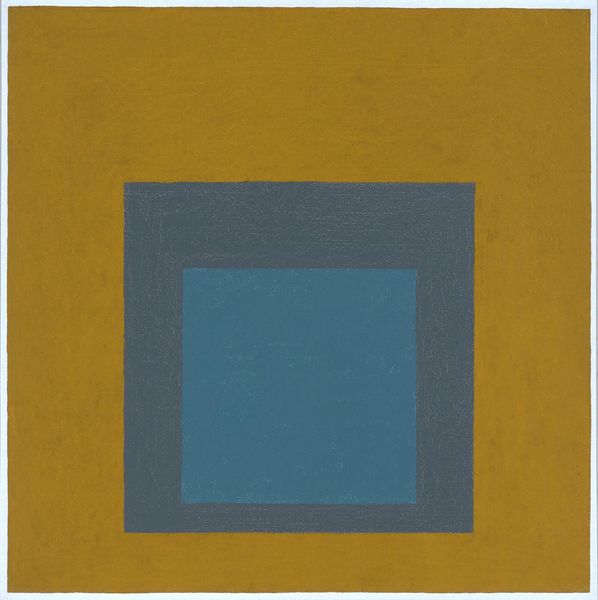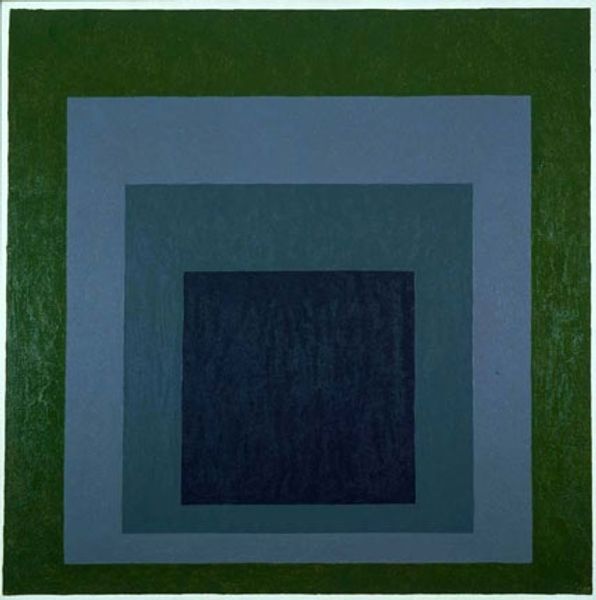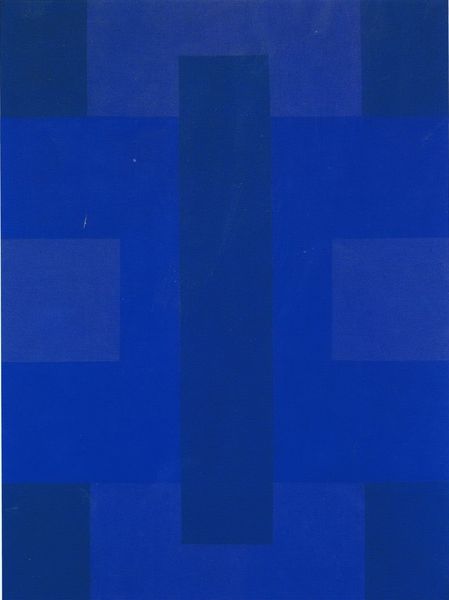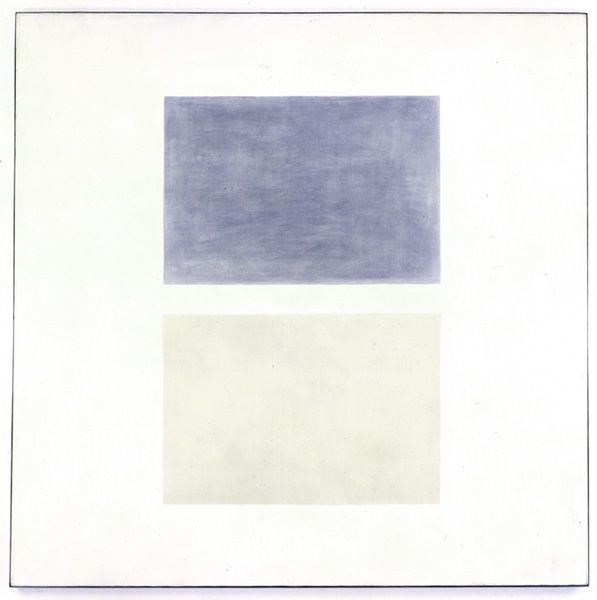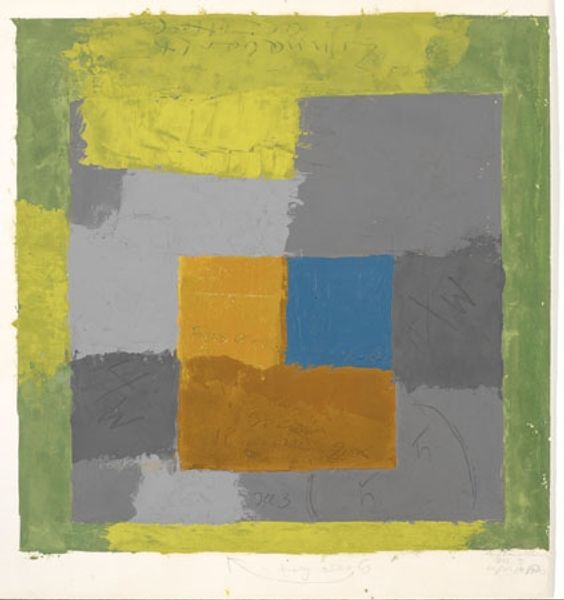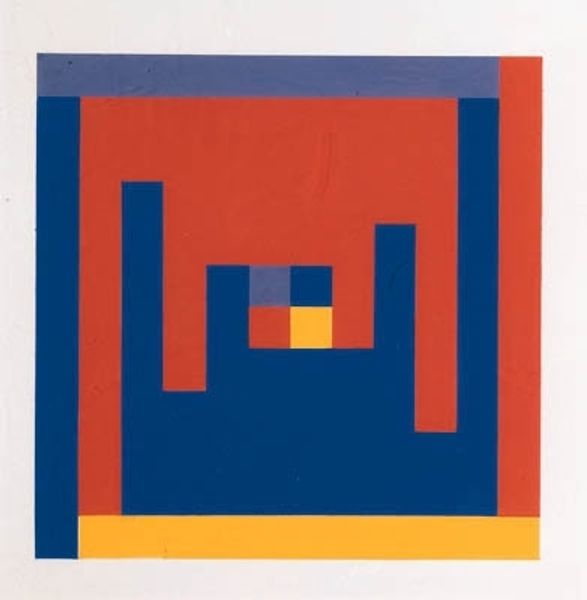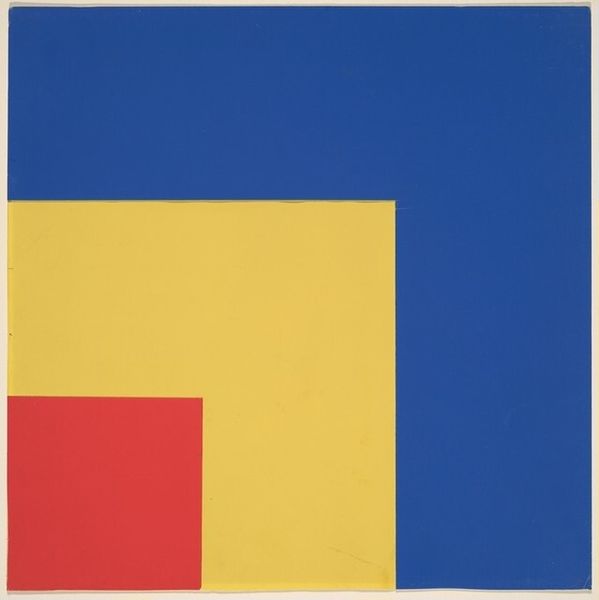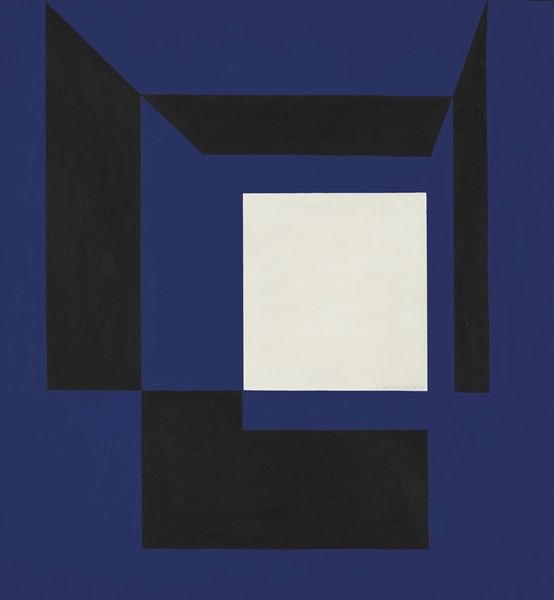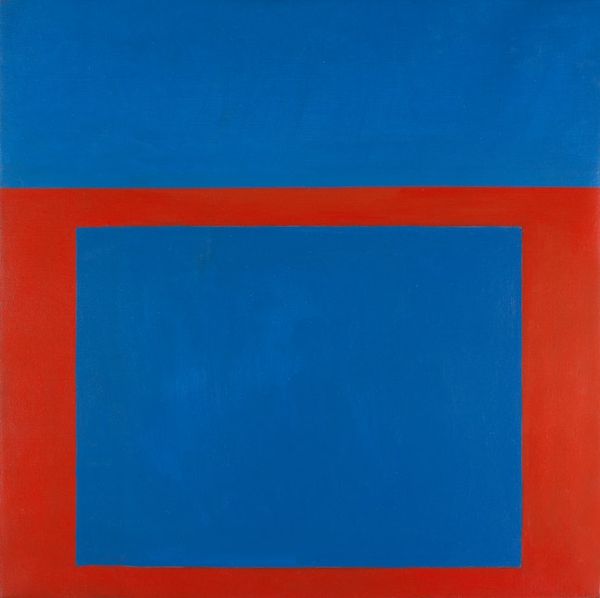
acrylic-paint
#
colour-field-painting
#
acrylic-paint
#
geometric
#
geometric-abstraction
#
abstraction
#
modernism
Dimensions: 28 x 28 cm
Copyright: Josef Albers,Fair Use
Editor: We’re looking at Josef Albers' *Homage to the Square: Blue & Green* from 1950, an acrylic painting. It’s comprised of a series of nested squares in various shades of blue and green. It’s interesting how he plays with color to create this effect of depth… what catches your eye? Curator: What strikes me is Albers’ meticulous engagement with acrylic paint – its materiality and application. Look at the texture. How does that deliberate manipulation of the medium affect the viewer’s perception of the color relationships and spatial dynamics here? Think about how commercial paints democratized artmaking in this period. Editor: So, you’re focusing on the paint itself as a material with specific properties and implications… not just the colors he chose? Curator: Precisely! The commercial availability and standardized production of acrylic paints shaped the possibilities of artmaking in the mid-20th century. Albers wasn't just expressing emotion through color; he was actively exploring the capabilities and limitations presented by a readily available industrial product. What does it mean to make "art" using a substance that's also used in everyday, mass-produced objects? Editor: That's an interesting point. I hadn’t thought about the socio-economic aspect of his materials. It challenges the idea of the artist as someone using precious, rare materials. Curator: Exactly. Albers elevates the mundane. Furthermore, consider the labor involved in creating these squares. The repetitious application, the precision… is there a critique embedded within the work about mass production or perhaps an embracing of its potential? Editor: So instead of just seeing nested squares, you're inviting us to consider the entire system that made it possible, from factory to canvas? It really reframes the conversation about abstraction. I will definitely remember that point of view for other pieces we look at today. Curator: Indeed. Shifting our gaze from the "what" to the "how" opens up entirely new avenues for understanding art and its connection to society.
Comments
No comments
Be the first to comment and join the conversation on the ultimate creative platform.


